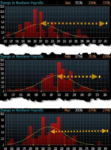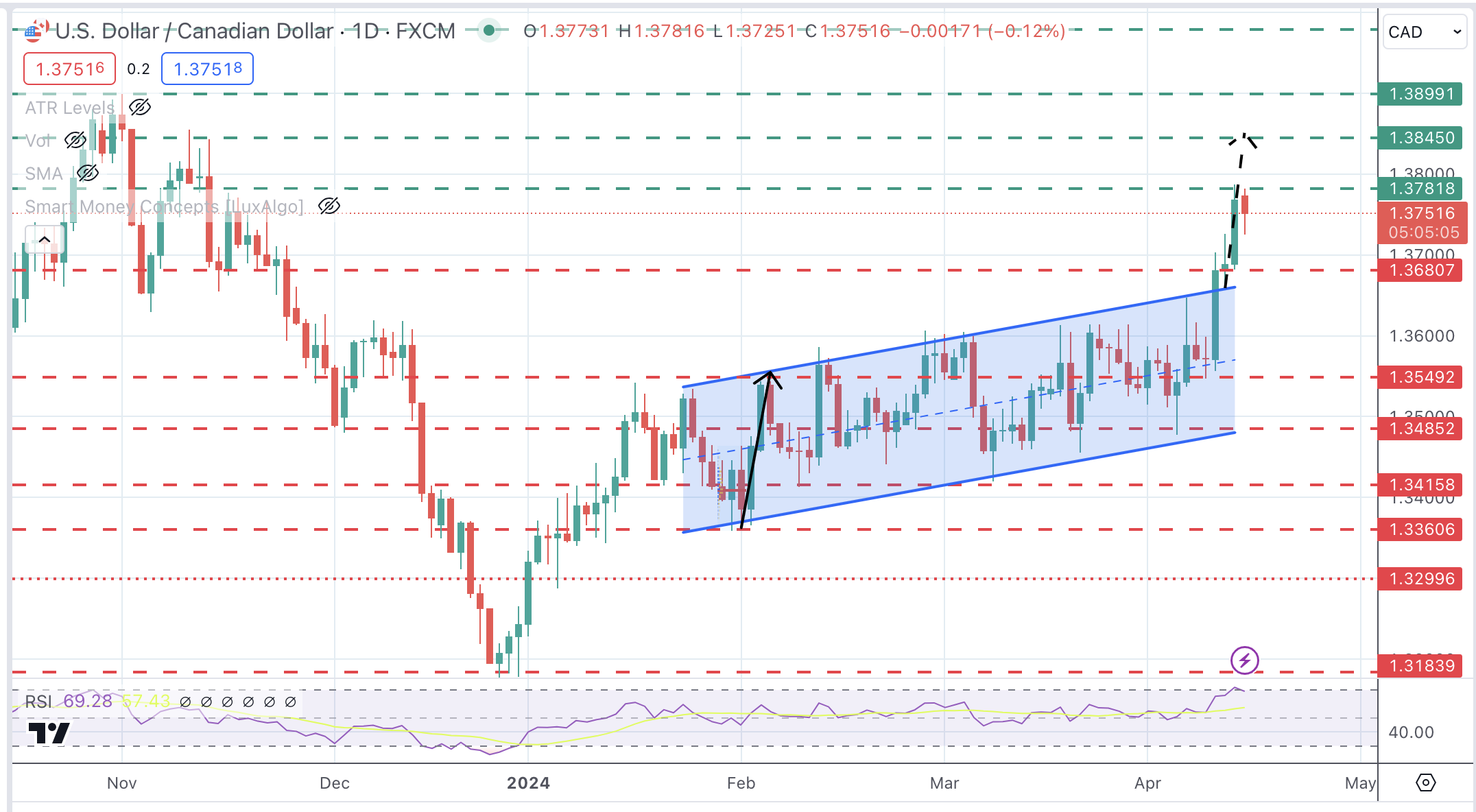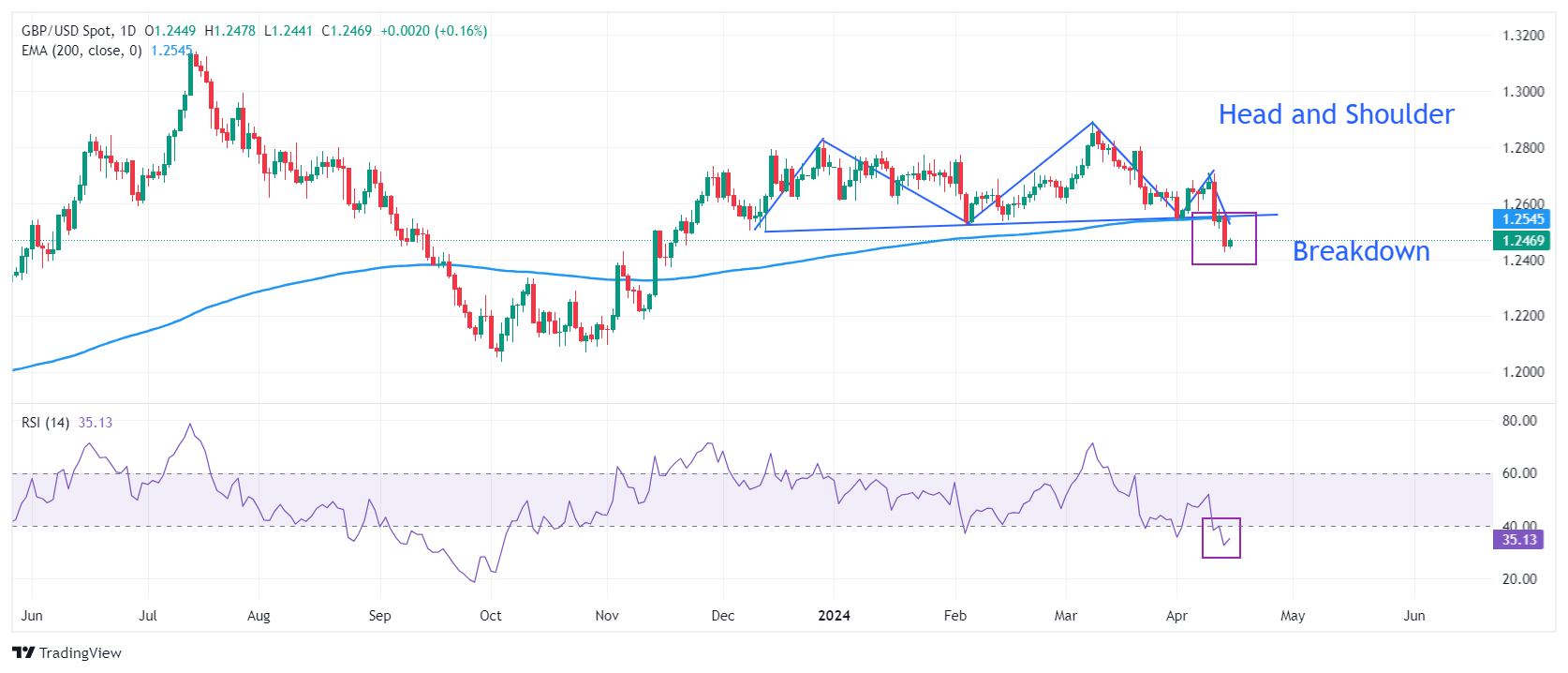Overview: While equities and bonds are firmer, it is the dollar's sell-off that stands out today. The greenback has retreated broadly. The euro is trading above the previous week's high for the first time in over a month, and the dollar was pushed back below JPY114.00 in early European turnover. The Chinese yuan is at four-month highs. The Antipodean and Scandi currencies are leading the move against the dollar among the major currencies. The JP Morgan Emerging Market Currency Index is near two-week highs and fraying the 20-day moving average for the first time in a month. The risk-on mood, helped by the anticipation of robust earnings, is lifting equities. The MSCI Asia Pacific Index is up for the fourth time in five sessions, led by more than 1% gains in Hong Kong and Taiwan. Among the large bourses in the area, Australia and India were the exceptions and slipped marginally lower. Europe's Dow Jones Stoxx 600 is struggling to maintain its early upside momentum. Utilities, energy, and materials are the strongest sectors today, while health care and staples lag. US futures are around 0.25% higher. Benchmark 10-year yields are mostly softer, leaving the US Treasury hovering below 1.60%. European yields have edged higher. A weaker dollar and softer Treasury yields have propelled gold higher. It approached resistance near $1785. Oil is firm. The November WTI contract is knocking on yesterday's high (almost $83.90), while the US natgas futures contract is steady after falling nearly 7.8% yesterday (and pulled back almost 5% before the weekend). Tight supplies continue to underpin copper prices, which are firm near yesterday's high and within striking distance of the year's high set in May. China's coal futures initially rallied strongly to new record highs but reversed in the last few minutes of trading, falling 5.5%, though still managed to eke out a 0.4% gain.
Asia Pacific
Japan's new prime minister Kishida is still trying to find his voice as he prepares to lead the LDP into the October 31 lower house election. His references to a new type of capitalism are vague, and his interest in redistribution lacks specifics. A Yomiuri survey out of the weekend showed the LDP the favorite by a nearly 4:1 margin. Kishida's own approval rate slipped four percentage points to 52%. While he has retreated from his initial overture to raise taxes on securities transactions, he defended the controversial 10% sales tax as necessary to pay for social security. On the other hand, he favors a debt-financed stimulus budget to help strengthen the recovery.
Japan will report September trade figures first thing tomorrow. In the popular consciousness, Japan is mercantilist and runs a trade surplus. This may have been true, but not for several years. In fact, this is the first year in four that Japan is recording a trade surplus through the first eight months of the year. Indeed through August, Japan's cumulative trade surplus of almost $7 bln is smaller than any month of the German trade surplus since the pandemic shutdown in April and May last year. There are very strong seasonal patterns in Japan's trade flows. For example, in the past 20 years, there was only once (2014) that the September trade balance did not represent an improvement from August. In August 2021, the trade balance was in deficit by JPY637 bln. The shortfall is expected to have been reduced by around JPY100 bln.
The slippage in US yields has weighed on the dollar against the Japanese yen. After stalling near JPY114.45 in the past two sessions, the greenback has been sold below JPY114.00 in the European morning. It has the feel of consolidation. Initial support is around JPY113.65, and a break of JPY113.00-JPY113.20 would be important from a technical perspective. The minutes from the recent RBA meeting did not deter the market from positioning for a rate hike around the middle of next year and extending the Australian dollar's recovery. After snapping a three-day advance yesterday, the Aussie has surged to its best level in over a month, near $0.7475. Last month's high was slightly below $0.7500. Above there, the next important technical area is seen around $0.7555-$0.7565. The PBOC set the dollar's reference rate tightly against expectations (CNY6.4307 vs. CNY6.4308), suggesting that last week's wider fix was not a protest after all. The dollar fell for a third session against the yuan, and the decline of about 0.55% is the largest since early January. It is also the first time since mid-June that the greenback is below CNY6.40.
Europe
The pipeline capacity auction disappointed those who thought Russia's Putin was signaling a relief to Europe's gas market. Reports indicate that Gazprom did not book additional volumes through its pipelines through Ukraine and took about a third of the additional capacity of the pipeline network that runs through Poland for next month. There was little change from Gazprom's October bookings. Gas prices jumped 15%-18% in the UK and continental Europe after the auction. The International Energy Association estimates that Gazprom could boost gas exports to Europe by 15%. Russia seems to want two things. First, it wants to use the controversial Nord Stream 2 pipeline, which has been completed and now awaits certification by German authorities. Second, it wants long-term agreements, whereas Europeans trade short-term contracts. Press accounts acknowledge that Russia has fulfilled its obligations under the long-term contracts but is not offering short-term "top-up" supply as it has in the past.
Hungary's central bank meets today. It is the first of three central banks in eastern and central Europe that meet this week. Recall that last month, Hungary raised the overnight deposit rate by 15 bp instead of the expected 25 bp. It had previously hiked the policy rate by 30 bp in June and again in July. The forint had been offered against the euro and dollar before the decision and continued to sell-off. Still, it is hard to separate causes and the hawkish Fed signal the day after the last Hungarian central bank meeting last month. The median forecast in the Bloomberg survey is for another 15 bp hike to 1.80%. Of note of the top two forecasters in the survey, one looks for 1.80%, and the other is the highest at 1.95%. Recall that Hungary's September year-over-year inflation accelerated to 5.5% from 4.9%, though the month-over-month increases have been 0.2% for the past two months.
Turkey's central bank meets on Thursday. Despite the acceleration of headline and core inflation in September, and the roughly 4.6% currency depreciation to new record lows this month (after the president dismissed three central bank officials), another 100 bp cut in the one-week repo rate is widely anticipated. It would bring it to 17%, just above the core rate (16.98%), which the Governor has emphasized lately. The September headline rate stood at 19.58%. However, it would seem that a 50 bp move would stretch out the easing for longer and maybe more to Erdogan's liking. Russia's central bank meets Friday. It also delivered a smaller than expected move last month, raising its key rate by 25 bp to 6.75% rather than a 50 bp hike the market expected. Its September CPI accelerated to 7.4% from 6.7%, and the core rate rose to 7.6% from 7.1%. The top four forecasters in the Bloomberg survey are split between a 25 and 50 bp move this week. A 50 bp move would likely be seen as a sign that the central bank will pause, while a 25 bp hike would leave the door more open.
The euro recovered from a three-day low yesterday (~$1.1570) to trade at a new high for the month near $1.1665 today. It appears to have taken out the downtrend line drawn off last month's highs. The $1.1670 area corresponds to the (38.2%) retracement objective of the decline since the September 3 high above $1.1900. The euro is also above the 20-day moving average (~$1.1620) for the first time since mid-September. The next important chart area is found around $1.1700-$1.1720. Sterling is butting against $1.38, which it has not seen since September 17. Resistance is seen in the $1.3830-$1.3850 area, which holds the (50%) retracement objective of the losses since the early June high (~$1.4250) and the 200-day moving average. Finally, we note that sterling's advance today is coming as the December short-sterling futures contract rallies (decline in the implied yield) by the most this year (four basis points).
America
Following yesterday's disappointing Chinese Q3 GDP, the US reported a significant miss of its own. Industrial production, which the median forecast in Bloomberg's survey anticipated a 0.1% gain, instead tumbled 1.3%, its largest decline since February. And, adding insult to injury, the 0.4% gain reported in August was revised to -0.1%. Weakness was especially pronounced in manufacturing, where supply chain issues continue to be disruptive. Manufacturing fell 0.7% in September, and the August series was revised to a 0.4% loss from a 0.2% gain. We note that both the manufacturing PMI and ISM advanced in September. Next week, the US reports its first estimate of Q3 GDP. Forecasts have been scaled back. The current median in Bloomberg's survey sees 3% growth. The Atlanta Fed's GDP tracker puts it at 1.2% as of October 15.
The economic calendar today features the housing starts and permits. Neither is expected to build on August's 3.9% and 6.0% gain, respectively. Four Fed officials speak today (Daly, Barkin, Bostic, and Waller). A report yesterday suggesting Chair Powell sold a large amount of equity funds last year has injected a new note of uncertainty in whether he will be reappointed. Meanwhile, the $480 bln that the debt ceiling was lifted by is rapidly being exhausted, and Treasury Secretary Yellen warned that extraordinary measures will be resorted to again. These measures could buy time. Amid great uncertainty, some project it could last until mid-December, while others see the limit biting in early January. The uncertainty appears to be skewing the T-bill market.
Canada and Mexico have light economic calendars today. After nesting for the past couple of sessions, the US dollar is taking another leg lower against the Canadian dollar. It is probing CAD1.2320 as the objective of the head and shoulders pattern we have been tracking (CAD1.2300) comes into view. Note that the lower Bollinger Band is found near CAD1.2290 today. A convincing break targets the CAD1.2230. The greenback is near yesterday's low against the Mexican peso (~MXN20.3090), which is the month's low. A break of MXN20.25, where a $300 mln option expires today, could signal a test on the 200-day moving average near MXN20.1660. The Brazilian real may also benefit from the broader setback in the US dollar. Initial support for the dollar may be in the BRL5.43 area.
Full story here Are you the author? Previous post See more for Next post
Tags: #USD,Currency Movement,Featured,Hungary,Japan,newsletter,Russia,Turkey























